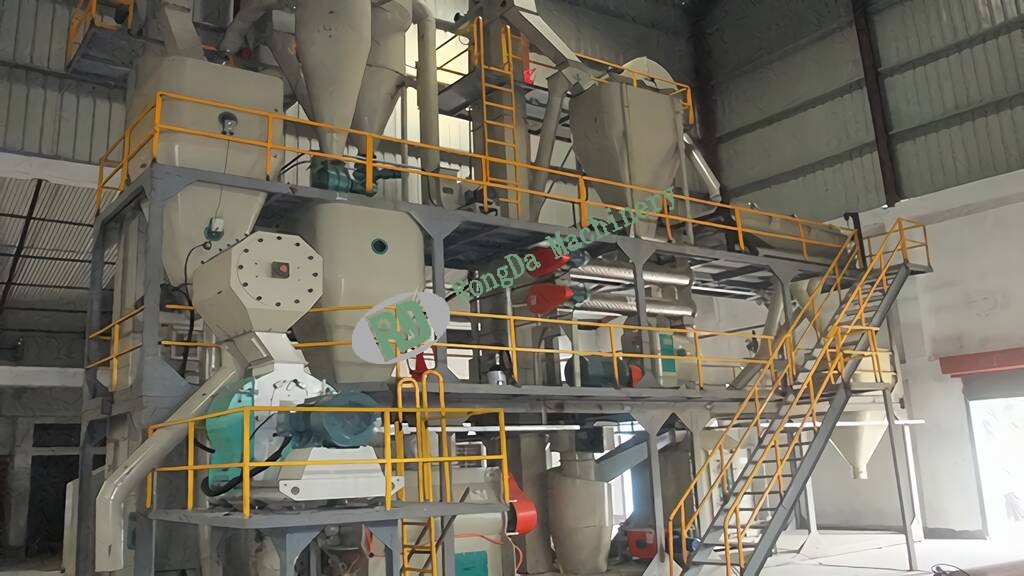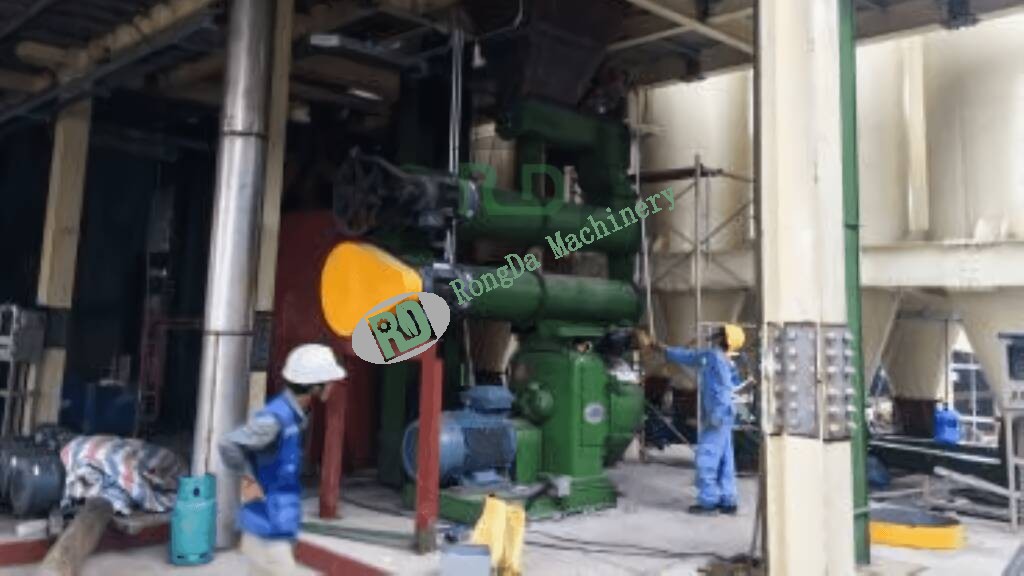Welcome to Rongda Machinery Co., Ltd
Toggle Navigation
A biomass pellet machine is a sophisticated device designed to convert various forms of biomass, such as crop residues, waste materials, and agricultural waste, into high-quality biomass pellets. These pellets are compact, homogeneous, and retain a significant portion of the original biomass's nutritional value and energy content. The primary purpose of a biomass pellet machine is to enhance the efficiency of biomass utilization, making it a crucial component in the energy transition and sustainable development.

Biomass pellet machines play a pivotal role in energy production by converting biomass into fuel pellets that can be burned to generate electricity. This process significantly reduces energy losses compared to traditional methods, making it a more efficient and sustainable energy source.
The use of biomass pellet machines contributes to environmental sustainability by reducing the need for fossil fuels and minimizing greenhouse gas emissions. Biomass, being renewable and abundant, is a key component in combating climate change and promoting sustainable development.
Biomass pellet machines offer a cost-effective solution for energy production. They enable the utilization of otherwise unused biomass, reducing reliance on non-renewable resources and lowering operational costs over time.
The drying process is a critical step in the production of biomass pellets. It involves removing water from the biomass to create a dry mass, which is essential for the subsequent stages of compression and granulation. Proper drying ensures that the biomass retains its moisture content, preventing degradation and ensuring consistent pellet quality.
The compression stage transforms the dry biomass material into dense, uniform pellets. This process is characterized by high pressure and temperature, which help in reducing the volume of biomass and increasing its energy content. The compression stage is a key step in the pelletization process, ensuring uniformity and strength in the final product.
The granulation process refines the compressed biomass into fine, uniform pellets. This step involves the application of heat and pressure to break down larger particles into smaller, manageable sizes. The granulation process is crucial for achieving the desired pellet size and ensuring the uniformity of the final product.
The packing stage involves placing the biomass pellets into standardized containers for storage and transportation. Proper packing ensures that the pellets are protected from environmental factors such as moisture and pests, maintaining their integrity and preventing degradation. This stage is essential for ensuring the efficiency and longevity of the biomass pellets.
Biomass pellet machines can process a wide variety of materials, each with its unique characteristics and applications. Common feedstocks include crop residues, such as rice husks and sugarcane bagasse, wood waste, including sawdust and wood chips, and agricultural waste, such as crop cuttings and manure. Each type of biomass offers unique advantages, making it suitable for different industrial applications.
The processing of different biomass materials involves specific considerations and techniques. For instance, wood waste may require specific pelletizing technologies due to its fibrous structure, while agricultural waste may need to be pretreated to improve pelletization efficiency. Understanding the characteristics of each feedstock is essential for optimizing the performance of biomass pellet machines.
Biomass pelletizing technologies vary in terms of wetness, moisture content, and energy requirements. Wet pelletizing involves processing biomass with a higher moisture content, while semi-wet and dry pelletizing cater to different operational needs and energy efficiencies. Each technology has its own set of advantages and is chosen based on the specific requirements of the application.
When selecting a biomass pelletizing technology, factors such as the desired pellet size, energy availability, and environmental impact must be considered. The choice of technology significantly affects the efficiency, cost, and environmental performance of the pelletizing process, making it a critical decision in the design and implementation of biomass pellet machines.
The quality of biomass pellets is determined by factors such as consistency, uniformity, and moisture content. Consistent and uniform pellets are essential for reliable energy performance and minimize the risk of blockages in pelletizing machinery. Ensuring high consistency and uniformity is a key aspect of biomass pellet machine operation and maintenance.
Energy efficiency and environmental impact are critical considerations in the performance of biomass pellet machines. Efficient pellet machines reduce energy consumption and minimize the environmental impact of biomass utilization. Additionally, the design and operation of the machine must consider the environmental impact of biomass processing, including emissions and waste generation.
The increasing interest in biomass energy is driven by the need to reduce carbon emissions, dependency on fossil fuels, and the search for sustainable energy sources. Biomass pellet machines are at the forefront of this trend, offering a viable solution for energy production while promoting environmental sustainability.
Biomass pellet machines find applications in a wide range of industries, including paper and forest industry, power generation, and waste management. In the paper industry, biomass pellets are used as a raw material for producing paper products, while in power generation, they serve as a clean and renewable energy source. In waste management, biomass pellets are used as a sustainable waste disposal solution.

The future of biomass pellet manufacturing lies in the continuous development of innovative technologies that enhance efficiency, reduce costs, and minimize environmental impact. Advances in automation, energy optimization, and material science are expected to drive the evolution of biomass pellet machines, making